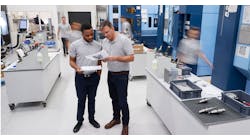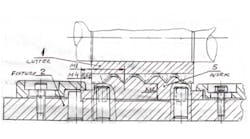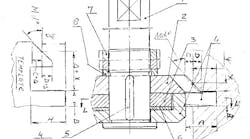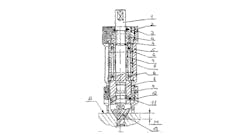A Minnesota-based company reports it has a $300,000 development grant from the U.S. Dept. of Energy that it will use to compare the energy consumption associated with machining using dry CO2 versus machining with conventional coolants. Cool Clean Technologies will partner in the research with Machining Efficiencies Inc., and companies expect that using dry, clean CO2 for machining will result in a 20-30% reduction in energy consumption thanks to the elimination of coolant systems and the decrease in force applied to the cutting tool that it makes possible.
Using CO2 to replace the liquid coolant used by machine shops everywhere will have other benefits, according to Clean Cool. It lists results productivity increases for the machining process, longer tool life, and environmental improvements because there are no unwanted side effects of using petroleum-based coolants. No CO2 is generated in this process, but rather is consumed similar to CO2 used to carbonate beverage drinks.
The new grant specifically addresses the use of CO2 for machining applications involving aluminum, carbon steel, titanium, and stainless steel. In 2009, Cool Clean Technologies received another grant to create an environmentally friendly coolant system for carbon fiber reinforced plastic (CFRP).
Cool Clean Technologies was founded in 2001 to develop environmentally friendly cleaning processes and applications using recycled carbon dioxide. Using recycled CO2 for cleaning and cooling eliminates the production of fossil fuel-based organic solvents, it stated. It has over 80 patents covering the various phases of carbon dioxide, as well as apparatus and process patents along with extensive knowhow in each area.
Machining Efficiencies is a consulting group that focuses on production machining processes and developing improvement programs that identify problems, offer resolutions, and indicate “long-term sustainable techniques to improve manufacturing performance.”



